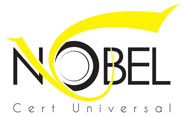ISO/IEC 27042:2015 provides guidance on the analysis and interpretation of digital evidence in a manner which addresses issues of continuity, validity, reproducibility, and repeatability. It encapsulates best practice for selection, design, and implementation of analytical processes and recording sufficient information to allow such processes to be subjected to independent scrutiny when required. It provides guidance […]

ISO 22000:2005 specifies requirements for a food safety management system where an organization in the food chain needs to demonstrate its ability to control food safety hazards in order to ensure that food is safe at the time of human consumption. It is applicable to all organizations, regardless of size, which are involved in any […]
ISO/IEC 27036-2:2014 specifies fundamental information security requirements for defining, implementing, operating, monitoring, reviewing, maintaining and improving supplier and acquirer relationships. These requirements cover any procurement and supply of products and services, such as manufacturing or assembly, business process procurement, software and hardware components, knowledge process procurement, Build-Operate-Transfer and cloud computing services. These requirements are intended […]
ISO/IEC 27018:2014 establishes commonly accepted control objectives, controls and guidelines for implementing measures to protect Personally Identifiable Information (PII) in accordance with the privacy principles in ISO/IEC 29100 for the public cloud computing environment. In particular, ISO/IEC 27018:2014 specifies guidelines based on ISO/IEC 27002, taking into consideration the regulatory requirements for the protection of PII […]
An Occupational Health and Safety (OH&S) Management System provides a framework for an organisation to identify and control its health and safety risks, reduce the potential for accidents, comply with legislation and improve operational performance. OHSAS 18001 is the requirement standard for an OH&S Management Systems which was recently updated and adopted as OHSAS 18001:2007. The update […]
ISO/IEC 27033-1:2015 provides an overview of network security and related definitions. It defines and describes the concepts associated with, and provides management guidance on, network security. (Network security applies to the security of devices, security of management activities related to the devices, applications/services, and end-users, in addition to security of the information being transferred across […]
ISO/IEC TR 90006:2013 provides guidelines for the application of ISO 9001:2008 to service management for IT services. Examples provided in the guidelines are for service management of IT services. Additionally, ISO/IEC TR 90006:2013 provides guidelines for the alignment and integration of a QMS and SMS in organizations where services are being delivered to internal or […]
ISO/IEC 17025 General requirements for the competence of testing and calibration laboratories is the main ISO standard used by testing and calibration laboratories. In most major countries, ISO/IEC 17025 is the standard for which most labs must hold accreditation in order to be deemed technically competent. In many cases, suppliers and regulatory authorities will not accept test or calibration […]
ISO 10001:2007 provides guidance for planning, designing, developing, implementing, maintaining and improving customer satisfaction codes of conduct. ISO 10001:2007 is applicable to product-related codes containing promises made to customers by an organization concerning its behaviour. Such promises and related provisions are aimed at enhanced customer satisfaction. Annex A provides simplified examples of components of codes […]
GLOBALG.A.P. is a farm assurance program, translating consumer requirements into Good Agricultural Practice. EurepGAP is a common standard for farm management practice created in the late 1990s by several European supermarket chains and their major suppliers. GAP is an acronym for Good Agricultural Practices. The aim was to bring conformity to different retailers’ supplier standards, which had been creating problems for farmers. […]